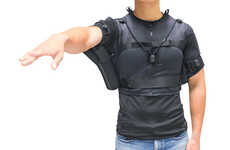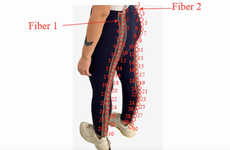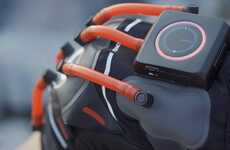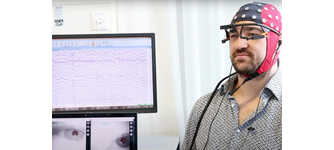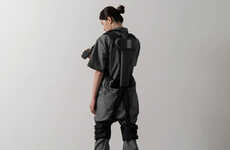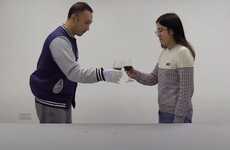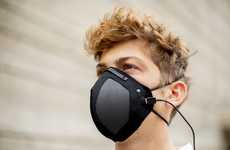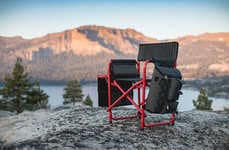
University of Bristol Researchers Balance Support and Rehabilitation
References: therighttrousers & theguardian
University of Bristol researchers have developed artificial muscle clothing, inspired by "he Wallace and Gromit clay animation The Wrong Trousers." Jonathan Rossiter—a professor of robotics at the institution—has shared that the key objective in developing wearable technologies is to provide support and assistance when needed.
The artificial muscle clothing is not controlled by the brain, but "works by measuring the muscle activity of the limbs." For Rossiter, the right balance needs to be established between assistance and rehabilitation device.
The University of Bristol team has also been working on some other high-tech solutions, including a thermosensitive knee brace that is made of graphene and a wearable pad that works to stimulate muscles through the skin.
Image Credit: John von Radowitz/ PA
The artificial muscle clothing is not controlled by the brain, but "works by measuring the muscle activity of the limbs." For Rossiter, the right balance needs to be established between assistance and rehabilitation device.
The University of Bristol team has also been working on some other high-tech solutions, including a thermosensitive knee brace that is made of graphene and a wearable pad that works to stimulate muscles through the skin.
Image Credit: John von Radowitz/ PA
Trend Themes
1. Artificial Muscle Clothing - A trend towards developing wearable technologies that provide support and rehabilitation in a non-invasive way.
2. Muscle Activity Measurement - A trend towards using muscle activity measurement as a means to control and inform artificial muscle clothing and other wearable technologies.
3. Thermosensitive Wearables - A trend towards developing wearables that use thermosensitive materials to provide personalized support and comfort.
Industry Implications
1. Healthcare - This technology could be used in healthcare to provide non-invasive support and rehabilitation options.
2. Sports - This technology could be used in sports to provide athletes with support during training and recovery.
3. Fashion - Fashion could harness the technology behind artificial muscle clothing to provide comfortable and supportive clothing for individuals with limited mobility.
2.5
Score
Popularity
Activity
Freshness

